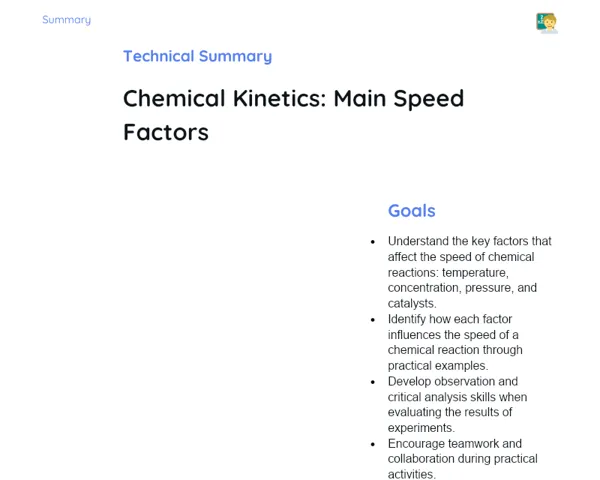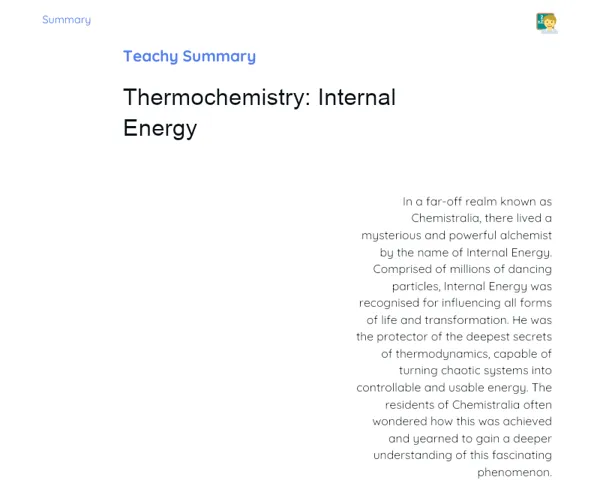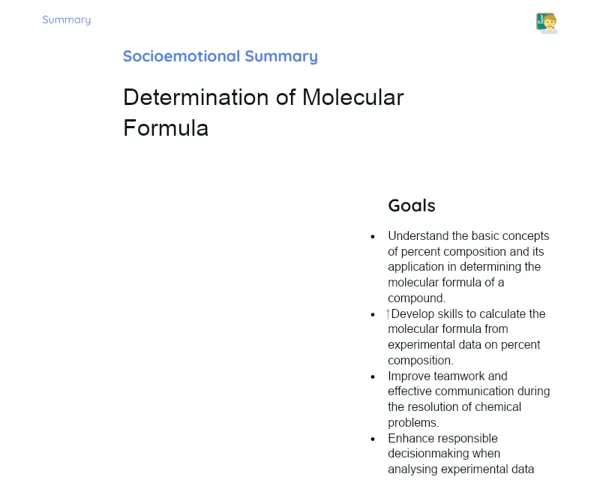Goals
1. Understand the Law of Conservation of Mass formulated by Lavoisier.
2. Apply the Law of Conservation of Mass to determine the mass of reactants and products in a chemical reaction.
3. Encourage critical thinking through problem-solving.
4. Develop practical skills in chemical experimentation.
Contextualization
The Law of Conservation of Mass, introduced by scientist Antoine Lavoisier in the 18th century, is a cornerstone principle of Chemistry. It states that during a chemical reaction, the total mass of the reactants is equal to the total mass of the products. Essentially, nothing is lost or created; everything just changes form. This law is crucial for comprehending a variety of industrial and laboratory processes and is key to ensuring precision in the production of chemicals, pharmaceuticals, and food items. For example, in pharmaceutical labs, Lavoisier's Law is vital for making sure that formulas are accurate and safe to use. In the food industry, keeping mass conservation in mind allows for balanced ingredient ratios that uphold quality and safety. Also, in recycling operations, this principle is used to evaluate how much material can be recaptured, enhancing the efficiency of sustainable practices.
Subject Relevance
To Remember!
Law of Conservation of Mass
The Law of Conservation of Mass, crafted by Antoine Lavoisier, asserts that during a chemical reaction, the total mass of the reactants equals the total mass of the products. In simpler terms, mass neither disappears nor is created; it merely transforms.
-
Nothing is ever lost, nothing is created; everything simply changes.
-
The mass of the reactants matches the mass of the products.
-
This law is fundamental for precision in both industrial and lab processes.
Application of the Law of Conservation of Mass in Chemical Reactions
Using the Law of Conservation of Mass enables us to determine how much of each reactant we need to produce a desired amount of product, and vice versa. This capability is crucial for formulating safe and accurate chemical products.
-
Enables the calculation of amounts of reactants and products.
-
Essential for the production of chemical, pharmaceutical, and food items.
-
Guarantees the accuracy and safety of these products.
Calculating Masses of Reactants and Products
Calculating the masses of reactants and products requires the application of the Law of Conservation of Mass. Knowing the mass of one component in a reaction allows you to figure out the mass of the others.
-
Utilises the Law of Conservation of Mass for mass calculations.
-
Critical for accurate product formulation.
-
Relevant across numerous industrial and laboratory settings.
Practical Applications
-
In the pharmaceutical field, to maintain the accuracy of medication formulations.
-
In the food sector, for accurately balancing recipes.
-
In recycling initiatives, to assess recoverable material quantities.
Key Terms
-
Law of Conservation of Mass: Principle that asserts mass is conserved in a chemical reaction.
-
Reactants: Substances involved in a chemical reaction.
-
Products: Substances produced as a result of a chemical reaction.
-
Antoine Lavoisier: The French scientist who developed the Law of Conservation of Mass.
Questions for Reflections
-
What impact does the Law of Conservation of Mass have on chemical product manufacturing in everyday scenarios?
-
What challenges do professionals encounter in maintaining precision during industrial processes?
-
How does applying the Law of Conservation of Mass foster sustainability and efficiency in production?
Practical Challenge: Checking Mass Conservation
To reinforce your grasp of the Law of Conservation of Mass, you'll conduct a practical experiment using baking soda and vinegar. This task will give you the chance to see mass conservation at work in a chemical reaction.
Instructions
-
Weigh an empty beaker and jot down the value.
-
Add 5g of baking soda to the beaker and weigh it again, recording the total mass.
-
In a plastic cup, measure out 50mL of vinegar and take note of its mass.
-
Cover the beaker with plastic wrap and poke a small hole to pour in the vinegar.
-
Add the vinegar to the beaker with the baking soda and watch the reaction unfold.
-
Once the reaction is complete, weigh the beaker with the resulting products and make a record.
-
Compare the initial mass of the reactants to the final mass of the products and discuss the findings.



